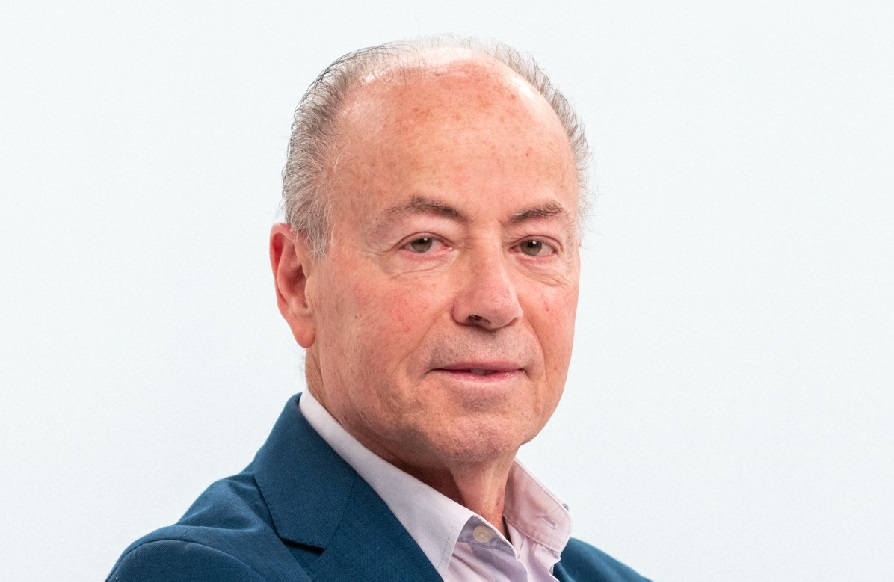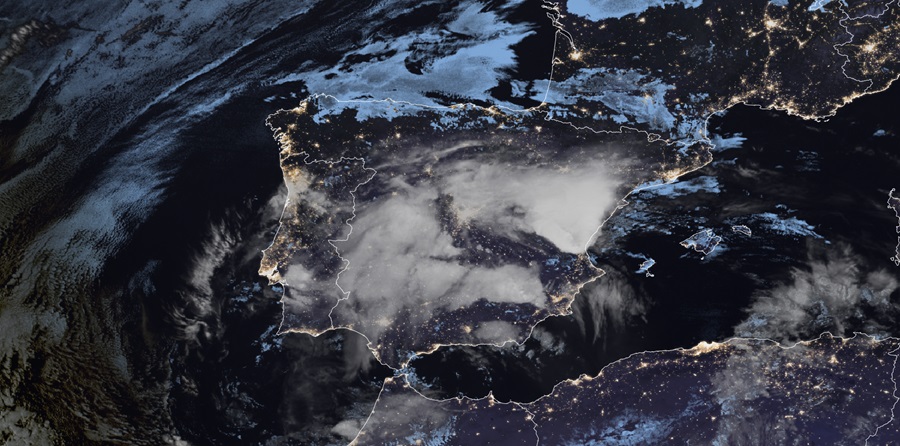- Face to face
- 22 de November de 2024
- No Comment
- 8 minutes read
Javier Martín Vide: “Time is running out”

FACE TO FACE WITH
Javier Martín Vide, professor of Physical Geography and climatologist.
Javier Martín Vide: “Time is running out”

In light of recent droughts, persistent climate change, and the ongoing presence of its deniers, an interview with Dr. Javier Martín Vide (Barcelona, 1954) feels almost mandatory. Dr. Martín Vide, a professor of Physical Geography at the University of Barcelona, a full academician at the Real Academia de Ciencias y Artes de Barcelona (Royal Academy of Sciences and Arts of Barcelona), and a corresponding member of both the Royal Academy for Overseas Sciences (Belgium) and the Academia Malagueña de Ciencias (Malaga Academy of Sciences), is among the foremost experts in statistical analysis of precipitation, climatology, and climate change.
After earning his degree in Mathematical Sciences in 1977, he completed a PhD in Geography and History in 1982, with a thesis titled Características climatológicas de la precipitación en la franja costera mediterránea de la península ibérica (Climatological Characteristics of Precipitation in the Mediterranean Coastal Zone of the Iberian Peninsula). Over the years, he has contributed to numerous scientific projects, with some of his major achievements being the discovery of the Western Mediterranean Oscillation (WeMO) and the development of the Concentration and Consecutive Disparity Indices.
Additionally, he has supervised 36 doctoral theses, served as the inaugural president of the Asociación Española de Climatología (1998–2004) and the Asociación Española de Geografía (2009–2013), and directed the Instituto de Investigación del Agua (Water Research Institute) at the University of Barcelona from 2015 to 2019. Dr. Martín Vide has published approximately 30 books and authored around 400 scientific articles, making him a prominent speaker and media commentator. In short, Dr. Martín Vide is uniquely positioned to provide clear, data-backed answers on global warming, free from ideological bias.
With your extensive experience, how would you explain global warming to the general define anthropogenicpublic?
The term itself is straightforward: it describes the notable increase in Earth’s temperature observed globally since the last two decades of the 20th century, with no sign of reversing so far. This warming is directly linked to human-caused greenhouse gas emissions and is the clearest manifestation of anthropogenic climate change.
I see that much of your research has focused on probabilistic analysis of precipitation, climate risks, and global warming. With the overwhelming data at your disposal, what would you say to those who deny anthropogenic climate change?
The sheer volume of meteorological data—ranging from weather station records to satellite observations and natural indicators—is vast, and climate data series are now so explicit that they show a statistically significant rise in global temperatures. For science, climate change is an undeniable reality.
“Current climate change is not unprecedented, but the human cause certainly is”
Around 13,000 years ago, global warming began due to natural astronomical factors. Today, human pollution might be accelerating this natural process, but what exact percentage would you attribute to anthropogenic causes?
Indeed, we are in a relatively warm interglacial period that began thousands of years ago, a natural cycle. However, over the past 40 years, the planet has been experiencing warming that cannot be explained by solar activity, Earth’s orbital cycles, or volcanic activity. The new cause is anthropogenic greenhouse gas emissions. Current climate change is not unprecedented, but the human cause certainly is.
You have published more than 25 books on climatology. Which one would you recommend as essential reading for the public?
None in particular. There are so many remarkable books worth reading, and life is short. However, for those interested in understanding Spain’s climate situation, I would recommend Cambio climático en España, which I recently co-edited with two university colleagues.
“The primary goal today is to restore the original quality of our greywater”
You have supervised about 36 doctoral theses, participated in various European research projects, and taught courses in Geography and Environmental Sciences, as well as in several master’s and doctoral programmes. Do you think the sciences hold enough weight in Secondary Education?
Sciences have often been undervalued and, at times, seen as “real graft subjects.” But the humanities fare no better. Take Geography, for example: it does not simply describe space, from global to local scales, but explains territories by integrating natural factors, population realities, and economic processes.
You have held numerous roles in the scientific community, including President of the Asociación Española de Climatología (1998-2004), of the Consejo Asesor del Servei Meteorològic de Catalunya (2000-2011), of the Asociación de Geógrafos Españoles (AGE) (2009-2013), Spanish Commitee of the World Climate Research Programme (2010-2015). Additionally, you directed the Water Research Institute at the University of Barcelona from 2015 to 2019. From these vantage points, what do you see as essential in future water management, given rising consumption and scarce rainfall?
Moderating water consumption in a country with limited resources is crucial. This includes avoiding new irrigated lands, which consume a large percentage of our water. The primary goal today is to restore the original quality of our greywater. Current water technologies enable efficient purification, and with an additional process, treated water can be regenerated for any use. In certain coastal and island regions, the continued use of desalinated water will continue being essential to meet growing demand.

As coordinator of the Grupo de Expertos de Cambio Climático de Cataluña y del Observatorio Metropolitano del Cambio Climático del Área Metropolitana of Barcelona, what strategies can we adopt to better manage summer heatwaves in our Mediterranean cities?
Excessive heat, especially in cities, is one of the main risks we face today. It has already become a public health issue, particularly affecting the underprivileged and elderly with chronic illnesses, especially those in energy poverty without air conditioning. We need to green our cities with more parks and gardens and convert many streets into green corridors. Shade structures, such as awnings and pergolas in high-traffic areas, climate shelters, green roofs, and cool roofs painted white to reduce solar radiation absorption, can help provide shade and lessen heat. It is also essential to replace impermeable surfaces with permeable ones, allowing rain or cleaning water to evaporate and cool the area. Hard plazas, popular 40 years ago, are now outdated in Mediterranean cities facing the reality of climate change.
“Is also essential to replace impermeable surfaces with permeable ones, allowing rain or cleaning water to evaporate and cool the area”
On climate change, between the pessimistic and catastrophic views of some on the political left and the optimistic views of some on the right, what would you say to both extremes?
On one hand, being optimistic about the current scenario is either naive or denialist; on the other, catastrophism leads to inaction. Neither approach is helpful. We must adopt a positive, proactive stance, doing everything within our reach toward sustainability and demanding action from public administrators to mitigate global warming as much as possible. Time is running out.
Source: educational EVIDENCE
Rights: Creative Commons


